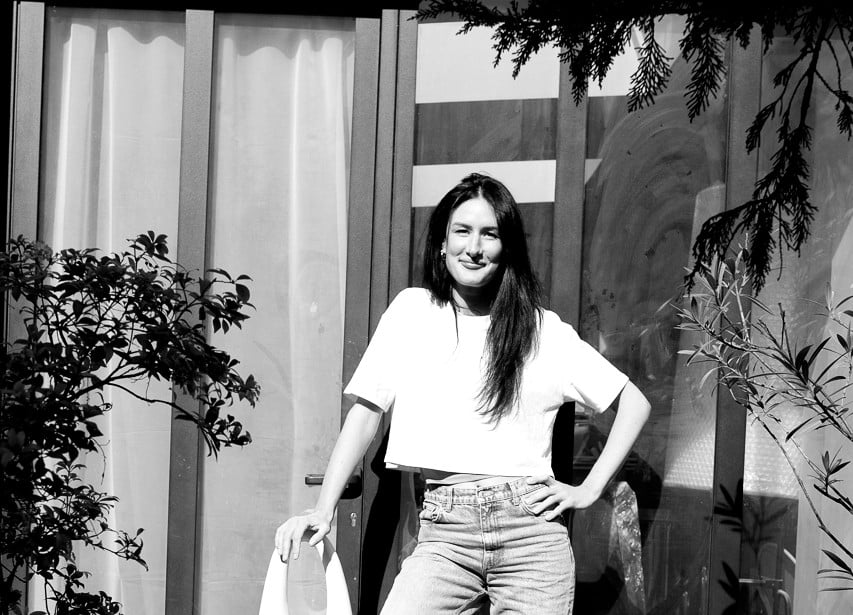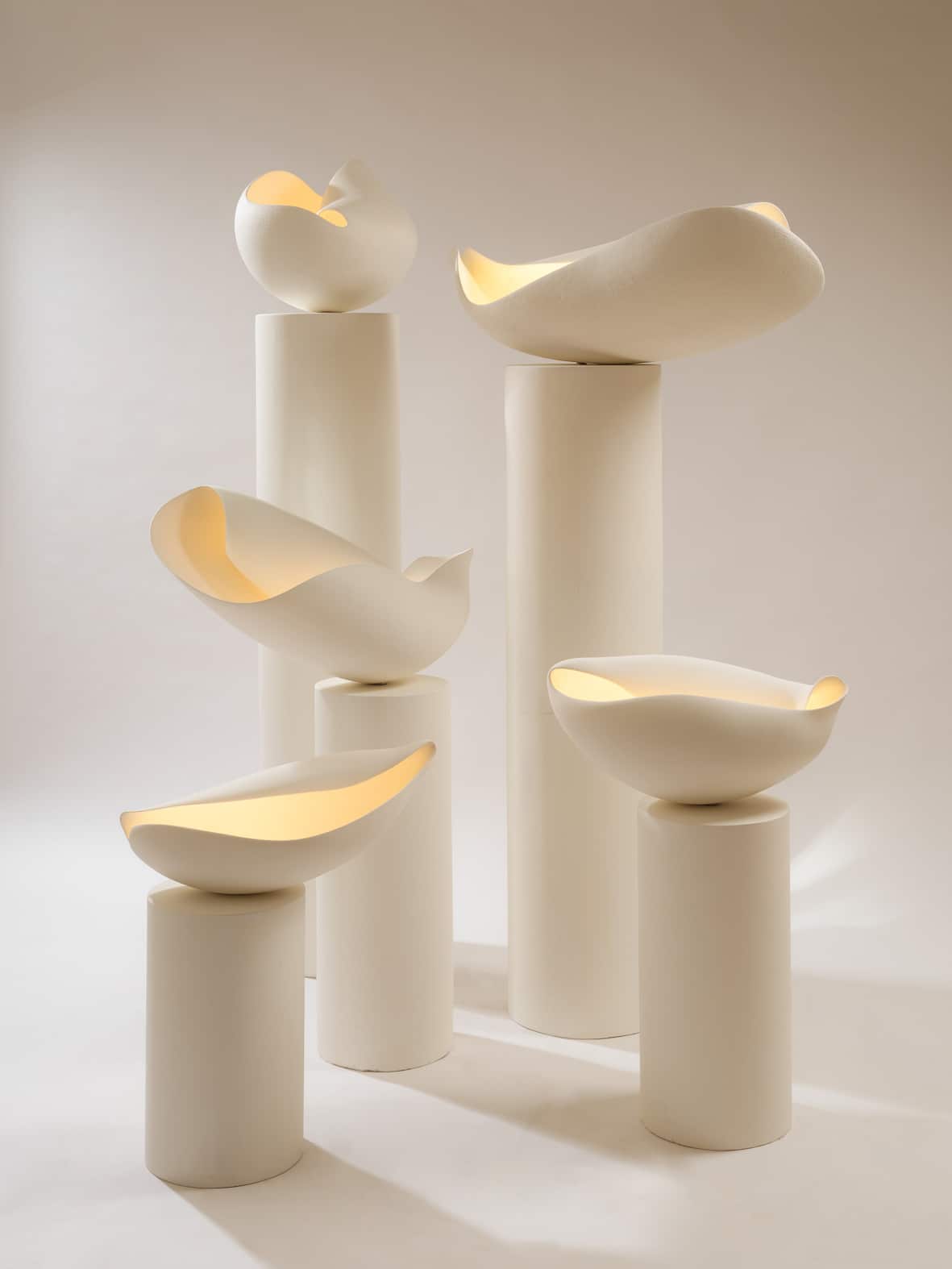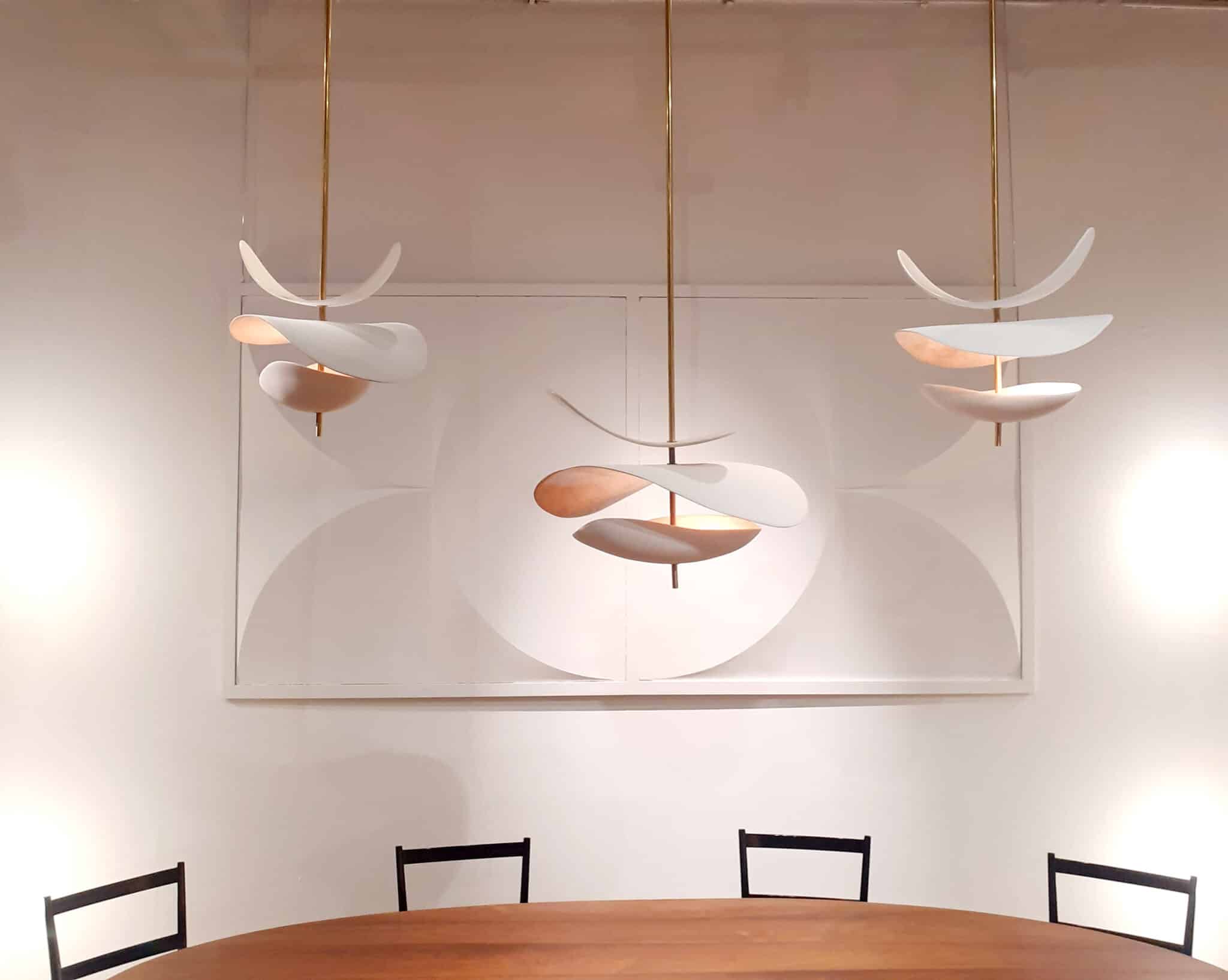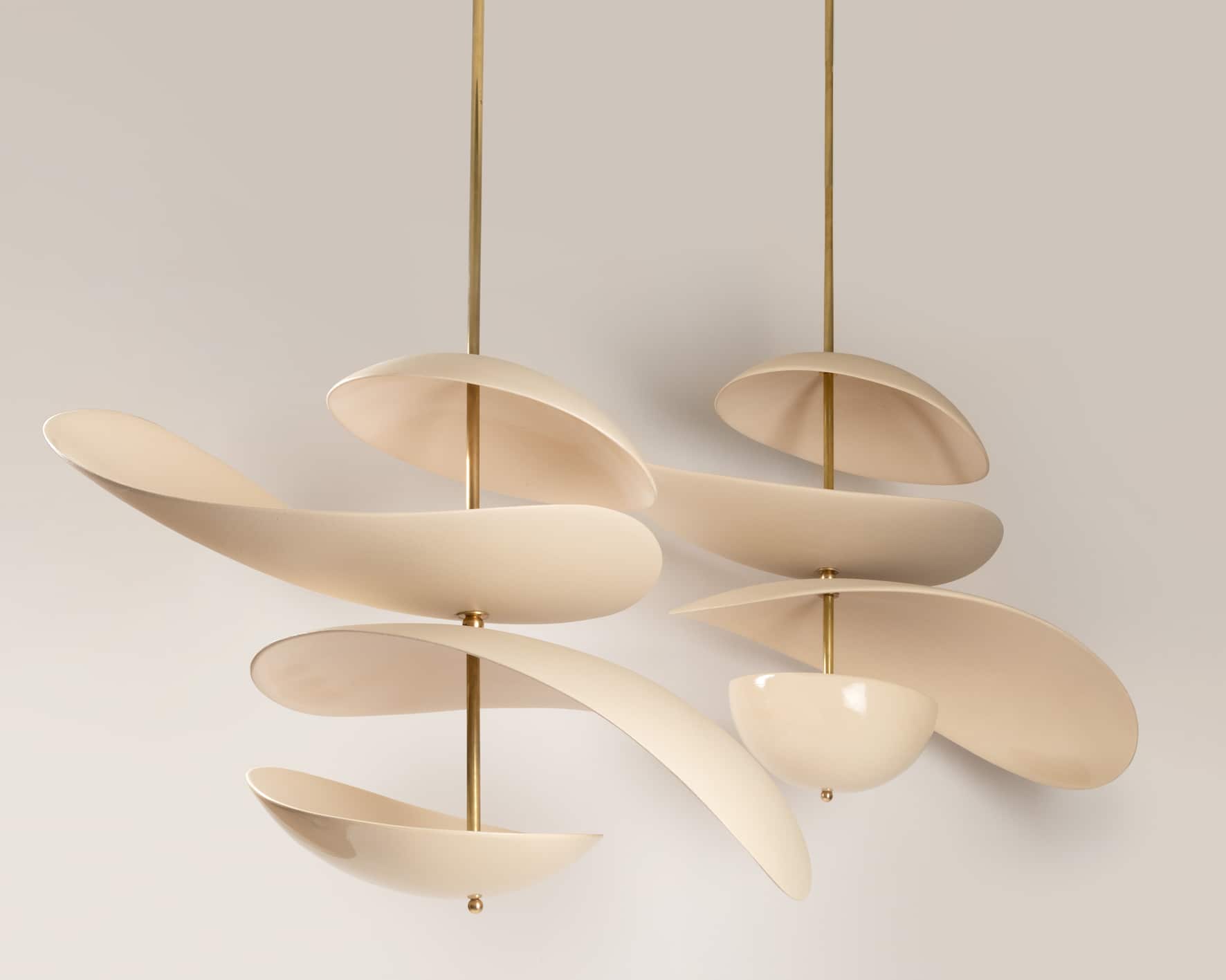
Elsa Foulon
1. Where were you born and where are you from ?
I was born in Roubaix in the North of France. I live and work in Paris, on the hill of Montmartre.
2. What is your first memory connected to the art world ?
When I was ten years old, my mother took us to a small art house cinema to see films by Jacques Tati. I loved the minimalism of this visionary author.
3. Have you always worked in the art/design field ?
Before becoming a designer, I was a decorative art dealer for more than ten years at the Saint-Ouen flea market. I was interested in the furniture of architects and designers from the 50s and 60s.
4. What led you to the design creation ?
By dint of having these superb objects in your hands, of being able to touch and manipulate them to understand how they were designed, I also started to want to create. Humbly, I started drawing in notebooks to lay down my ideas, about 5 years ago. One day, a friend offered me to put a lamp in his gallery, and it was sold during the day, I couldn’t believe it! This sale was the trigger: my creations could touch people, so I dared to make it my job. Then I opened my studio in Paris two years ago.
5. How would you describe your creative process and it influences ?
My credo is to go straight to the point. I was greatly inspired by the simplicity that we found in the manufactures, lines and design of the 50s and 60s. This period is the post-war era. Everything had to be reinvented: the materials, the methods of manufacturing, the way of thinking about space… A great moment of renewal and of innovation, very different from what was done before. For example, we started to design chairs that were lighter, smaller, and that could be moved around easily. Appliances have arrived. It was the period of functionalism: we tried to produce in large quantities while maintaining high production quality. I am also inspired by currents of decorative art from the end of the 19th century and the first half of the 20th Century.
6. Could you describe a typical day of your work ?
In the morning, before starting the intense day of the workshop, I take the time to answer the emails. Then I get my team together and we take stock of the day ahead. Then comes the production stage: shaping the clay, drying, sanding, enameling, then assembly, electricity, before packing in boxes to ship the orders. All this is interspersed with appointments with customers, craftsmen of suppliers.
7. Why did you choose the specific materials you work with ?
In my former work, I was fascinated by ceramics, by this ancestral gesture which combines four elements: water, earth, fire and air, we can create anything we want, and for thousands of years. I also chose this medium because I started alone and without a production budget. A little naively, I said to myself that ceramics would make it possible to produce volumes quickly and to concretize my ideas. But I discovered that, in reality, ceramic is a complex and capricious material, which requires a lot of logic and attention. The slightest error in drying can crack or cause collapse a room. Oven accidents are common. It takes years of practice. I would even say that it takes a lifetime to become a ceramist.


8. What are the technical particularities of your creations ?
I work with large volumes of very thin ceramic plates. I use soil mixed with paper fibers so that they are lighter and stronger after cooking. I try to simplify the line as much as possible. Everything is made in my workshop. The clay comes from France, the brass is shaped in Paris by an artisan turner from brass. Lampshades too. I am very attached to this production of unique local pieces of quality.
9. What advices could you give to beginning artists who would like to create sculptural design works ?
Get started! Don’t be afraid to try, make mistakes or fail.
10. If your works had to belong to a design movement, in which one would you define it ?
I stand between functionalism and symbolism. Unconsciously at first time, the perfect forms of nature have been a great source of inspiration. Then a day, it was pointed out to me that my sconces looked like conches. I started to take an interest in seashells and to deepen the aestheticism that surrounds them. The wealth and variety of their shapes fascinate me. The shell is aesthetical, but also useful, since it protects a mollusk that lives there. The beauty of the object matches its function.
11. What designers have influenced you ?
All the designers of the 40s-50s. Paavo Tynelle for the lights, Jean Royère for the furniture, the geniuses of Italian design like Ico Parisi, Angelo Lelli, Max Ingrand… I already appreciated when I was a seller at the flea market, all my inspirations were already there. But I went into them later.
12. What contemporary designers do you appreciate ?
I really like the work of Vicenzo DeCotis, the Parisian Mathias Kiss or the group of designers “Waiting for The Barbarians”.
13. What contemporary artists (in any kind of art) have you been inspired by ?
Franz West, Hubert Duprat, Alexandre Bigot and my friend Jihee Han
14. If you had to summarize your creations in one word or sentence, what would it be ?
Simplicity requires great rigor.
15. Is there anything you would like to add ?
–
Proust Questionnaire with very short answers (one or a few words) :
(The Proust Questionnaire is a set of questions answered by the French writer Marcel Proust. Other historical figures who have answered confession albums are Oscar Wilde, Karl Marx, Arthur Conan Doyle, Stéphane Mallarmé, Paul Cézanne…)
1. What is your idea of perfect happiness?
The complicity of a giggle.
2. What is your greatest fear?
The sorrows of love
3. What is the trait you most deplore in yourself?
Don’t take the time to ask me that kind of issues…
4. What is the trait you most deplore in others?
And if I preferred to appreciate their qualities?
5. Which living person do you most admire?
I love all living beings (well almost…)
6. What is your greatest extravagance?
Dare to answer this questionnaire
7. What is your current state of mind?
I’m questioning myself
8. What do you consider the most overrated virtue?
Prudence
9. What is the quality you most like in a man ?
Her femininity
10. What is the quality you most like in a woman ?
His masculinity
11. Which words or phrases do you most overuse?
Oh la vache!
12. Which talent would you most like to have?
To sing
13. If you could change one thing about yourself, what would it be?
One thing ? If I have to change one thing, then I change everything! Otherwise, I don’t change anything.
14. What do you consider your greatest achievement?
It’s too early, come back to see me in twenty years!
15. If you were to die and come back as a person or a thing, what would it be?
As a human being, to start a new story
16. Where would you most like to live?
In a painting by Douanier Rousseau
17. What is your most treasured possession?
My family and my friends
18. What do you regard as the lowest depth of misery?
That it exists
19. What is your favorite occupation?
To float on the sea
20. What is your most marked characteristic?
An unfortunate tendency to dodge questions…
21. What do you most value in your friends?
Their vacation home
22. Who are your favorite writers?
Bret Easton Ellis, John Fante and the French Lise Kervennic
23. Who is your hero of fiction?
Shrek & Fiona, aren’t all real heroes are anti heroes?
24. Which historical figure do you most identify with?
Antoine de St Exupéry and the Petit Prince
25. Who are your heroes in real life?
–
26. What are your favorite names?
Frida and Diego
27. What is it that you most dislike?
Bad faith
28. What is your greatest regret?
My biggest regret will be is to one day to have one
29. How would you like to die?
Petrified by Medusa
30. What is your motto?
The accident is simply the success that is desired


